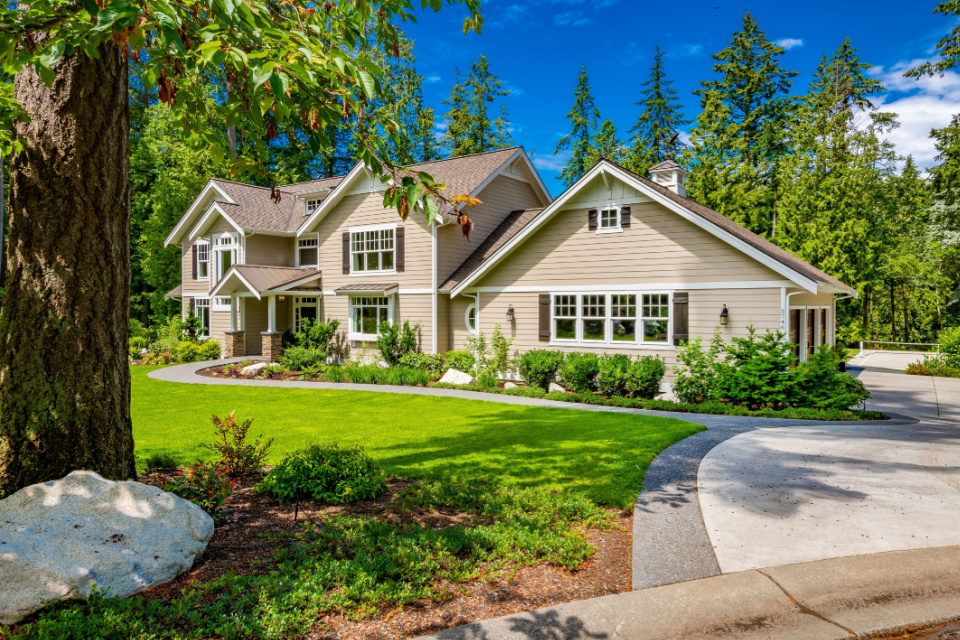
Sloping Block Construction Guide in Australia
07/25/2023
Australian Landscape Challenges in Home Construction
07/25/2023Sustainable house design is highly valued in Australia, as the country prioritizes environmental conservation and energy efficiency. One key aspect of sustainable house design in Australia is the utilization of sustainable materials and methods during the design, planning, and operational stages. This includes the use of eco-friendly building materials such as recycled or renewable resources, low-VOC paints and finishes, and energy-efficient appliances and fixtures. Another key aspect is the implementation of green practices. This includes the incorporation of renewable energy sources like solar panels, rainwater harvesting systems, and efficient waste management strategies.
Furthermore, sustainable house design in Australia prioritizes the reduction of environmental impacts caused by the housing sector. This involves the adaptation of quality materials, designs, and insulation methods to lessen the environmental impact of a house and reduce energy consumption. By using sustainable materials and implementing energy-efficient practices, sustainable house design in Australia aims to create healthy indoor living environments with improved social, environmental, and economic conditions. Additionally, sustainable house design in Australia emphasizes the integration of traditional architectural principles with modern technology systems. This integration ensures that building materials and energy sources are chosen with the goal of increasing the durability of buildings, promoting convenience in dwelling, reducing pollution and waste, and saving energy and operating costs. Moreover, sustainable house design in Australia is driven by the concept of sustainability, which focuses on conserving natural resources for future generations.
By following these key aspects of sustainable house design, houses in Australia are not only able to provide habitable spaces for residents but also contribute to the overall socio-economic development of the country. This involves using eco-friendly building materials, such as recycled or renewable resources, and implementing energy-efficient practices. By incorporating these elements, sustainable house design aims to reduce the environmental impact of the housing sector and create healthy indoor living environments. In addition to utilizing sustainable materials and methods, green practices are also an essential aspect of sustainable house design in Australia. This includes the installation of solar panels to harness renewable energy and reduce reliance on fossil fuels. Furthermore, sustainable house design in Australia emphasizes the importance of proper planning and consideration during the design and operational stages. This includes optimizing the layout of the house to maximize natural lighting and ventilation, as well as implementing technologies that monitor and control energy consumption.
The integration of traditional architecture principles with modern technology is another key aspect of sustainable house design in Australia. By combining the knowledge and wisdom of traditional architectural practices with advancements in modern technology, sustainable house designs can achieve a harmonious balance between aesthetics, functionality, and sustainability.
This integration enables the use of appropriate building materials and energy sources, which increases the durability of buildings and ensures comfortable living conditions for residents. In addition, it helps in minimizing energy and operating costs, reducing pollution and waste, and promoting resource conservation for the benefit of future generations. Sustainable house design in Australia also focuses on improving the quality of life for residents and promoting socio-economic development.
This is accomplished by creating habitable spaces that prioritize the well-being of residents and contribute to their overall quality of life. Incorporating sustainable materials, designs, and insulation methods not only reduces the environmental impact of houses but also minimizes the cost of living by reducing energy consumption.
Another key aspect of sustainable house design in Australia is the consideration of climate and site-specific factors. This involves designing houses that are responsive to the local climate, considering factors such as solar orientation, prevailing winds, and natural shading. By designing houses that are optimized for the local climate, residents can benefit from natural heating and cooling strategies, reducing their reliance on artificial heating and cooling systems and ultimately reducing energy consumption. Furthermore, sustainable house design in Australia also prioritizes the use of renewable energy sources. This may include the installation of solar panels or wind turbines to generate clean and renewable energy for the house.
Additionally, sustainable house design in Australia seeks to create a healthy indoor living environment for residents. This involves the use of non-toxic and low-emission building materials to prevent indoor air pollution. Furthermore, sustainable house design in Australia also emphasizes the importance of good ventilation to promote air circulation and reduce the risk of mold and moisture build-up. By prioritizing the use of sustainable materials and methods, as well as implementing green practices throughout the design, planning, and operational stages, sustainable housing in Australia can enhance the wellbeing of residents and reduce the environmental impact.
In addition to enhancing the wellbeing of residents and reducing environmental impact, sustainable housing in Australia also contributes to socio-economic development.
By incorporating sustainable design features, the housing industry in Australia can stimulate economic growth and create employment opportunities. This can be seen through the demand for environmentally sustainable housing development projects, which has been recognized by housing developers in Australia. They are increasingly responding to this demand by incorporating eco-friendly and energy-reduction features into their designs. These features not only attract environmentally conscious buyers but also contribute to job creation and economic growth in the construction industry.
In conclusion, sustainable house design in Australia is characterized by its focus on climate-responsive design, use of renewable energy sources, consideration of indoor environmental quality, and promotion of socio-economic development.




